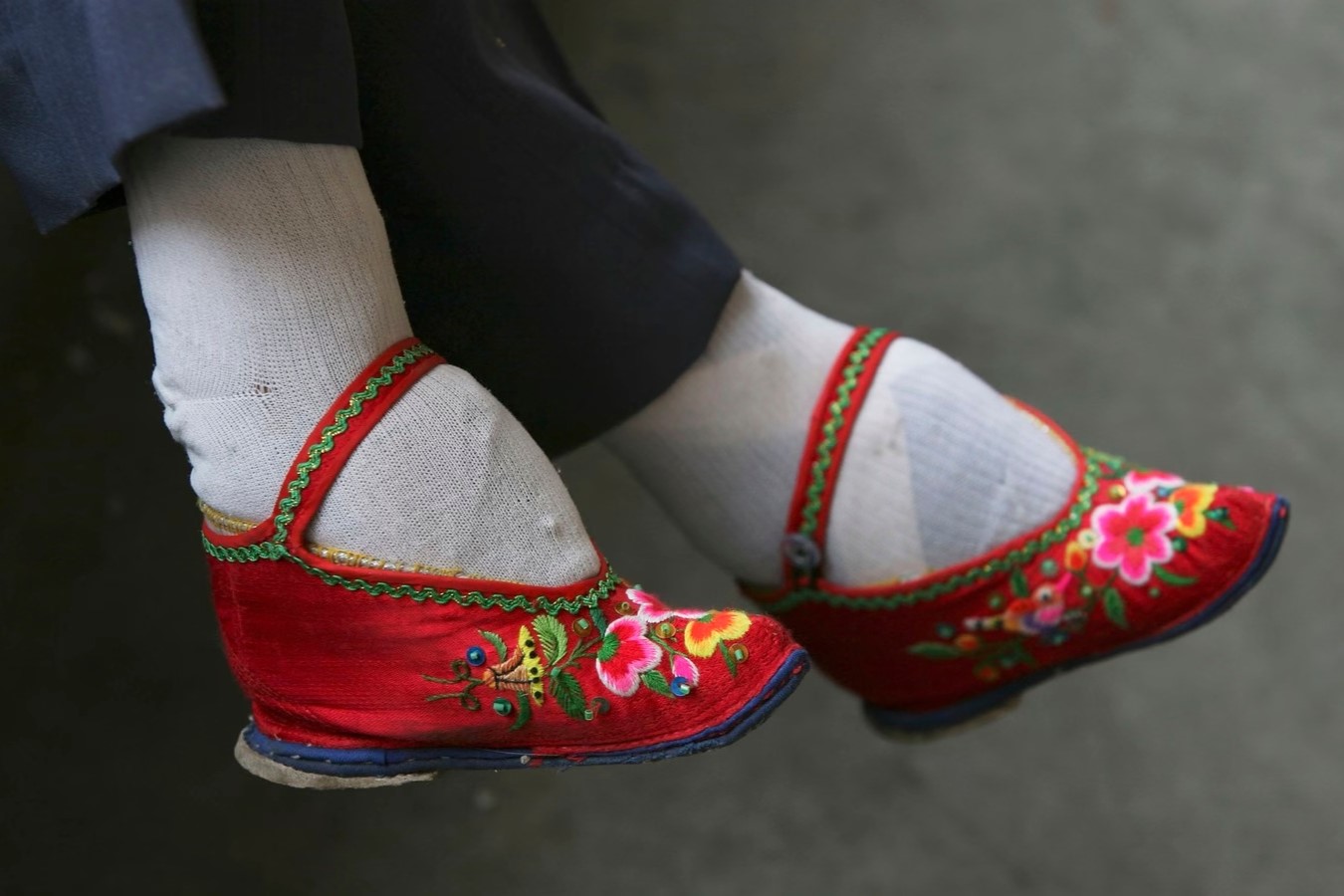
Chinese foot binding was a practice that lasted for over a thousand years, leaving a significant mark on Chinese culture and history. But what exactly was it, and why did it persist for so long? Foot binding involved tightly wrapping young girls' feet to alter their shape, aiming to achieve the coveted "lotus feet." This painful process often started between ages 4 and 9, leading to lifelong physical consequences. Despite its harshness, it symbolized beauty, status, and even marriage eligibility in ancient China. Understanding the reasons behind this tradition offers a glimpse into the societal norms and values of the time. Let's dive into 35 intriguing facts about this ancient custom.
Key Takeaways:
- Chinese foot binding, a painful beauty practice, symbolized status and femininity. It caused lifelong health issues and was abolished in 1912 due to Western influence and Chinese reformers' opposition.
- Foot binding, a cultural tradition in China, began as a symbol of beauty and status but led to severe health consequences. It was officially banned in 1912, influenced by Western criticism and Chinese reformers.
Origins of Chinese Foot Binding
Chinese foot binding, a practice that lasted for centuries, has a fascinating and complex history. It began as a symbol of beauty and status, but its implications were far-reaching.
-
Foot binding started during the Song Dynasty (960-1279 AD). It was initially practiced by upper-class women and gradually spread to other social classes.
-
The practice was inspired by a dancer named Yao Niang. She bound her feet into the shape of a new moon, which captivated Emperor Li Yu.
-
Foot binding was believed to enhance a woman's beauty. Small feet, often referred to as "lotus feet," were considered highly attractive.
-
The ideal foot length was about 3 inches. This size was known as the "golden lotus."
The Process of Foot Binding
The process of foot binding was excruciating and began at a young age. It involved several steps to achieve the desired foot shape.
-
Girls typically started binding their feet between ages 4 and 9. This was when their bones were still soft and malleable.
-
The process began with soaking the feet in hot water. This was followed by massaging and cutting the toenails to prevent infections.
-
The toes were then curled under the sole. They were tightly bound with long strips of cloth to keep them in place.
-
The arch of the foot was broken. This helped to create the desired concave shape.
-
The bindings were tightened regularly. This ensured the feet remained small and continued to reshape over time.
Cultural Significance and Social Implications
Foot binding was more than a beauty standard; it had deep cultural and social implications.
-
Bound feet were a status symbol. They indicated that a woman came from a wealthy family that could afford not to have her work.
-
It was believed to increase a woman's marriage prospects. Men often preferred wives with bound feet, associating them with femininity and obedience.
-
Foot binding was a rite of passage. It marked the transition from girlhood to womanhood.
-
Women with bound feet were often more dependent. This increased their reliance on male family members.
-
The practice reinforced gender roles. It emphasized the idea that women should be delicate and confined to the home.
Health Consequences of Foot Binding
The health consequences of foot binding were severe and lifelong. The practice caused numerous physical issues.
-
Chronic pain was common. Many women experienced pain throughout their lives due to the unnatural foot shape.
-
Infections were frequent. Poor hygiene and tight bindings often led to infections, sometimes resulting in gangrene.
-
Mobility was significantly reduced. Women with bound feet had difficulty walking and performing daily tasks.
-
Foot deformities were permanent. The bones were permanently altered, leading to lifelong deformities.
-
Other health issues included arthritis and muscle atrophy. These conditions were exacerbated by the lack of physical activity.
The Decline and Abolition of Foot Binding
The decline of foot binding began in the late 19th and early 20th centuries, influenced by various social and political changes.
-
Western influence played a role. Western missionaries and diplomats criticized the practice, highlighting its cruelty.
-
Chinese reformers also opposed foot binding. They saw it as a hindrance to modernization and progress.
-
The practice was officially banned in 1912. The new Republic of China government outlawed foot binding.
-
Enforcement of the ban was inconsistent. Some rural areas continued the practice for several decades.
-
Anti-foot binding societies emerged. These groups worked to educate people and provide support for women with bound feet.
Modern Perspectives on Foot Binding
Today, foot binding is viewed as a historical curiosity and a symbol of past oppression. It serves as a reminder of the lengths to which societies can go in the name of beauty.
-
Foot binding is studied by historians and anthropologists. They seek to understand its cultural and social significance.
-
Survivors of foot binding are rare. Most women who experienced it have passed away, but their stories are preserved through oral histories.
-
Museums and exhibitions feature foot binding artifacts. These include shoes, bindings, and photographs.
-
Foot binding is often compared to other body modification practices. These include corsetry and modern cosmetic surgery.
-
The practice is a topic of feminist discourse. It highlights issues of body autonomy and societal pressure.
Interesting Tidbits about Foot Binding
There are many lesser-known facts about foot binding that add depth to our understanding of this practice.
-
Special shoes were made for bound feet. These shoes were often elaborately decorated and considered works of art.
-
Foot binding varied by region. Different areas of China had unique styles and methods of binding.
-
Some women resisted foot binding. They found ways to avoid or undo the bindings, though this was rare.
-
Literature and poetry often referenced bound feet. They were depicted as symbols of beauty and eroticism.
-
Foot binding influenced Chinese fashion. Clothing styles were designed to complement and showcase bound feet.
-
The last generation of women with bound feet lived through significant historical changes, witnessing the end of an era.
Reflecting on Foot Binding
Chinese foot binding, a practice steeped in history, reveals much about cultural norms and beauty standards of ancient China. This tradition, lasting over a millennium, impacted countless women, shaping their lives and societal roles. Understanding these historical facts helps us appreciate the complexities of cultural evolution and the human experience.
Foot binding wasn't just about aesthetics; it symbolized status, marriage prospects, and even family honor. While the practice ended in the early 20th century, its legacy remains a poignant reminder of the lengths societies go to conform to ideals.
Learning about such practices encourages reflection on modern beauty standards and societal pressures. It’s a stark reminder of how far we've come and the importance of continuing to challenge harmful norms. By studying the past, we gain insights into creating a more inclusive and understanding future.
Frequently Asked Questions
Was this page helpful?
Our commitment to delivering trustworthy and engaging content is at the heart of what we do. Each fact on our site is contributed by real users like you, bringing a wealth of diverse insights and information. To ensure the highest standards of accuracy and reliability, our dedicated editors meticulously review each submission. This process guarantees that the facts we share are not only fascinating but also credible. Trust in our commitment to quality and authenticity as you explore and learn with us.


